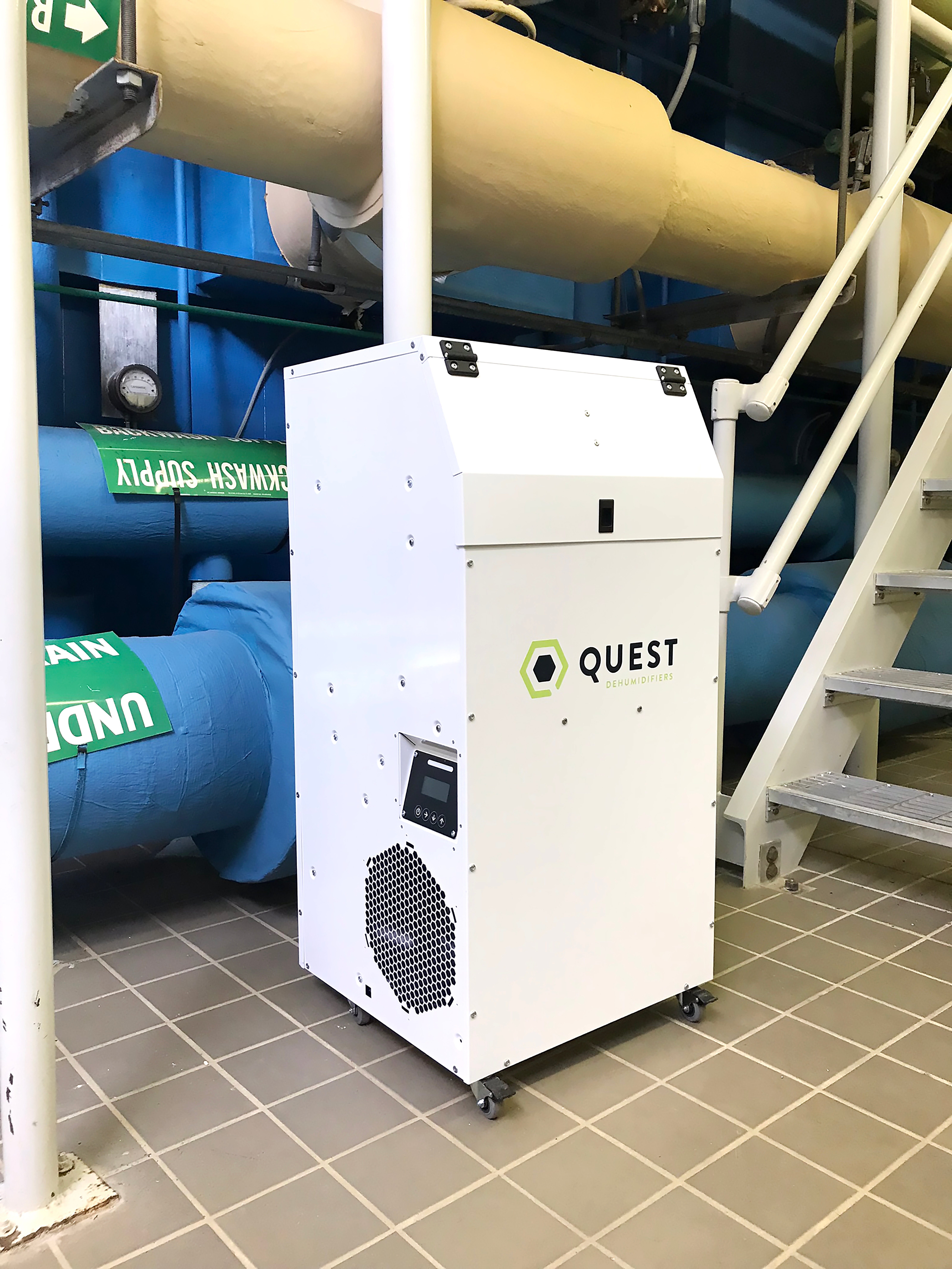- Home
- Supply Insights
- The Hidden Costs of Humidity: Saving Money with Commercial Dehumidifiers
In this Supply Insights article, we explore the often-overlooked impact of humidity in water treatment and storage facilities, and how investing in the right commercial dehumidifier can protect equipment, safeguard employees and cut long-term costs.
Why Dehumidification Matters
Humidity might be mostly invisible, but its consequences are not. Excess moisture in water treatment plants, lift stations and storage buildings can quietly wreak havoc on both infrastructure, personnel and electrical equipment.
When pipe galleries show signs of sweating, rust can ruin pipes while humidity corrodes electrical panels. Before long, you're facing costly repairs, safety hazards and unplanned downtime to replace prematurely inoperable equipment.
Commercial dehumidifiers play a crucial role in mitigating these risks. They help preserve essential infrastructure, extend the lifespan of expensive equipment and create a safer, healthier work environment. Targeted dehumidification can be one of the most cost-effective strategies for facilities management, especially in high-moisture environments like wastewater treatment plants.

Humidity in Water Treatment
Water treatment facilities are inherently high-moisture environments. Open water tanks, aging infrastructure, and poor ventilation combine to raise ambient humidity levels well above ideal conditions. While some modern HVAC systems can handle moisture removal, many facilities, especially older ones, lack the necessary systems to keep humidity in check.
Even when HVAC systems are present, relying solely on them can be inefficient and expensive. Commercial dehumidifiers are designed to maintain optimal humidity levels efficiently and save money in the long run.
Hidden Hazards of Excess Moisture
The consequences of unmanaged humidity extend well beyond comfort:
- Electrical Failure: Moisture accelerates corrosion and increases the risk of flash arcing, potentially damaging or destroying critical electrical panels, pumps and control systems.
- Workplace Safety Risks: Condensation on floors and equipment increases the likelihood of slips and falls. Mold and mildew thrive in damp environments, posing respiratory risks and regulatory red flags.
- Asset Degradation: Moisture promotes wood rot, peels paint and attracts pests, leading to unsightly conditions and higher maintenance demands.
- Regulatory Compliance: Facilities can face penalties or shutdowns during inspections if signs of moisture damage, such as rust, leaks or slippery surfaces are present.
The price of doing nothing is often far greater than the cost of a commercial dehumidifier.

Choosing the Right Dehumidifier
Selecting the proper commercial dehumidifier is about more than just plugging in a machine; it’s about targeting the space. 
- Permanent Wall-Mounted Dehumidifiers: Ideal for areas with predictable high humidity, like pipe galleries or pump rooms. These systems integrate with plumbing and electrical to offer continuous, hands-off moisture control.
- Portable Commercial Dehumidifiers: Perfect for smaller municipalities or specific problem areas, portable commercial dehumidifiers provide flexible coverage. They’re especially useful after flooding
 or during seasonal humidity spikes. Just be sure to choose a unit with adequate CFM (cubic feet/minute) to handle the intended space.
or during seasonal humidity spikes. Just be sure to choose a unit with adequate CFM (cubic feet/minute) to handle the intended space.
When sizing a dehumidifier, consider the total cubic footage of the room, the desired relative humidity and whether the area is occupied or unattended.
Proper sizing ensures efficient operation. Oversizing can waste energy, while undersizing won’t adequately protect your equipment.
Long-Term Payoffs: Why Invest?
Adding a commercial / industrial dehumidifier isn’t just about comfort, it’s about facility management and equipment longevity.
- Protection for critical electronics from corrosion and premature failure
- Improved indoor air quality and fewer health hazards from mold and mildew
- Easier sludge dewatering while lowering polymer chemical usage and haul costs
- Compliance with regulatory standards with no rust, no condensation, and no citations
- Extended lifespan of infrastructure including pipes, paint, seals, and motors
- Reduced HVAC strain that lowers energy bills and maintenance costs
In many facilities, the electric bill is the largest recurring expense. Moisture forces HVAC systems to work harder and shortens the life of equipment. Industrial dehumidifiers lighten that load, reducing energy consumption and unplanned downtime.
Extend the Life of Your Systems with Dehumidification
Humidity control is essential for comfort, costs and maintaining your equipment and electrical systems. Whether you’re retrofitting an aging lift station or optimizing a state-of-the-art treatment plant, dehumidification should be at the center of your maintenance strategy.
It's your (mostly) silent partner that prevents corrosion, boosts air quality and saves you from major repair costs down the line.
A small investment in the right commercial dehumidifier today can prevent massive headaches tomorrow.
Curious about what products and programs can help with effective dehumidification? Start a conversation with your local Supply account manager.
Charles Kayton - Regional Account Manager


